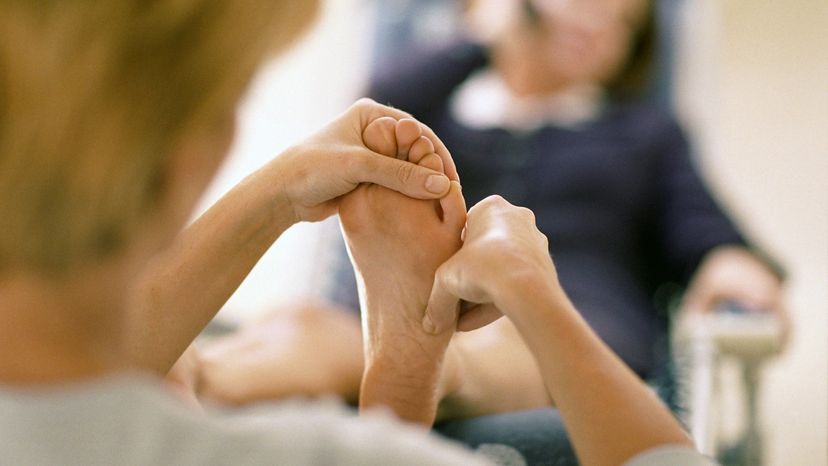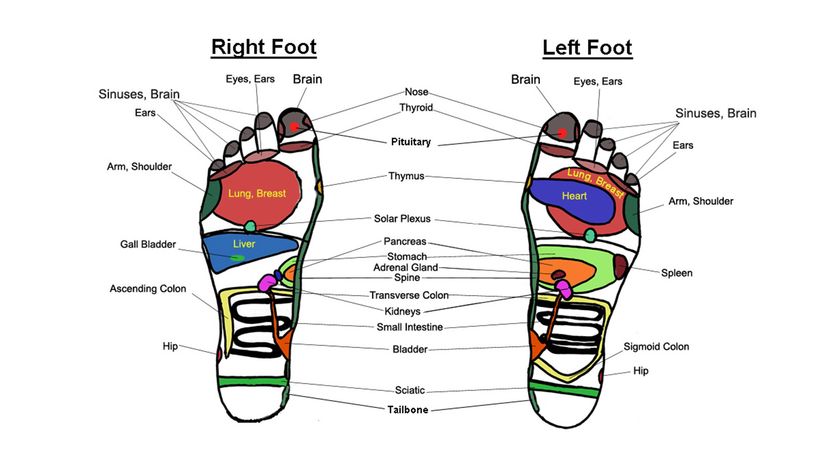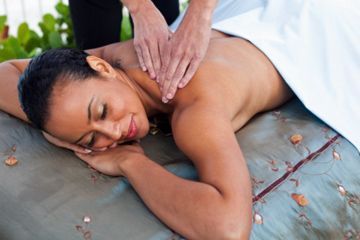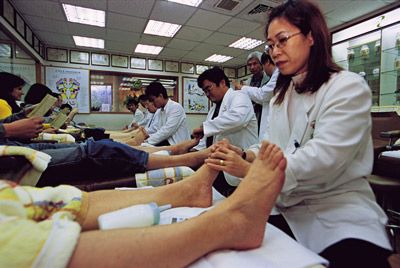Most people would agree that massage of any kind typically feels pretty nice, but does reflexology actually do anything other than incite pleasant feelings?
"There is scientific evidence to support the effectiveness," Varga says. "In 1993, a double-blind study was done through the American Academy of Reflexology by Bill Flocco and Terry Oleson and there are many case studies which explain and show the efficacy of reflexology."
Flocco and Oleson's small study, "Randomized Controlled Study of Premenstrual Symptoms Treated with Ear, Hand, and Foot Reflexology," was published in the Journal of Obstetrics and Gynecology. The researchers found that of the participants, 35 women with premenstrual syndrome, the subjects randomly assigned to receive reflexology experienced a greater decrease in symptoms than the women in the placebo group.
A more recent 2012 study titled "Health-related quality-of-life outcomes: a reflexology trial with patients with advanced-stage breast cancer" found that women undergoing chemotherapy for breast cancer who received regular reflexology treatments showed significant improvements in their ability to walk, carry groceries and climb stairs, compared to their counterparts who did not receive reflexology. The researchers concluded that "reflexology can be recommended for safety and usefulness in relieving dyspnea and enhancing functional status among women with advanced-stage breast cancer."
However, while there have been studies that demonstrate potential benefits of using reflexology as an adjunct therapy, there's no science to back up the pressure point theory itself. According to a 2011 systematic review of randomized clinical trials concluded "that the best clinical evidence does not demonstrate convincingly reflexology to be an effective treatment for any medical condition." So while applying pressure to specific areas of your hands and feet is definitely not guaranteed to alleviate any sort of illness, the low-risk option may be a nice complement to other forms of health care and wellness strategies, and most people can feel safe seeking it out.
"The time needed to see results varies from person to person," Varga says. "Many factors play a part: type of ache or pain, complaint, issue, etc. Also, how long someone has had the issue can sometimes influence the recovery time. My experience shows that 99 percent [of people] feel at least some sense of relaxation after the first session."
Varga does, however, caution that expectant moms might want to steer clear. "During the first trimester of pregnancy, there are areas on the feet, hands and ears that shouldn't be reflexed, though the remainder of the area can be touched," she says. As birth doula and co-founder of Birth Day Presence, Jada Shapiro, told Parents.com, the risk is that reflexology may bring on uterine contractions, so working with a trusted expert is key.
"As for side effects, a little drowsiness, a burst of energy, queasiness, or slight headache can sometimes occur," Varga says. "Usually these are brief, if at all, and with proper hydration, can be eliminated."



